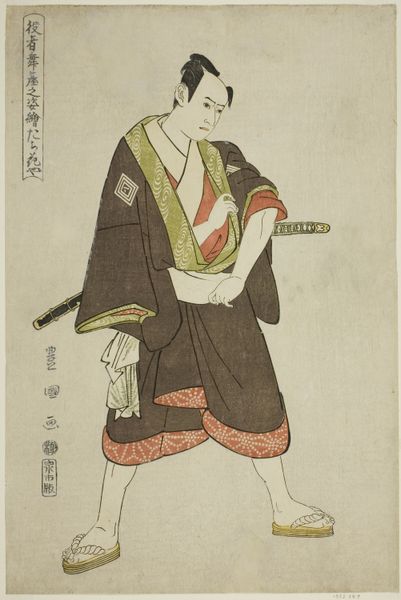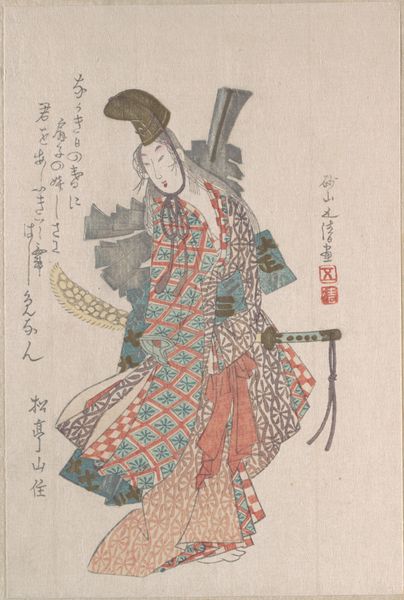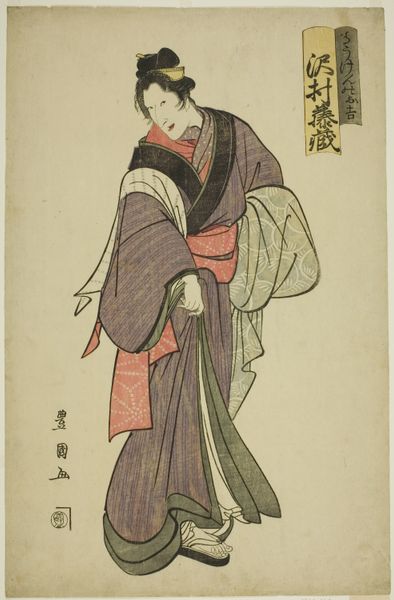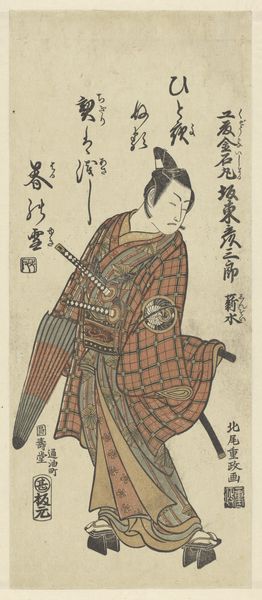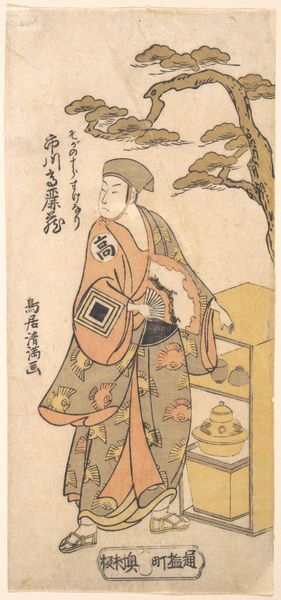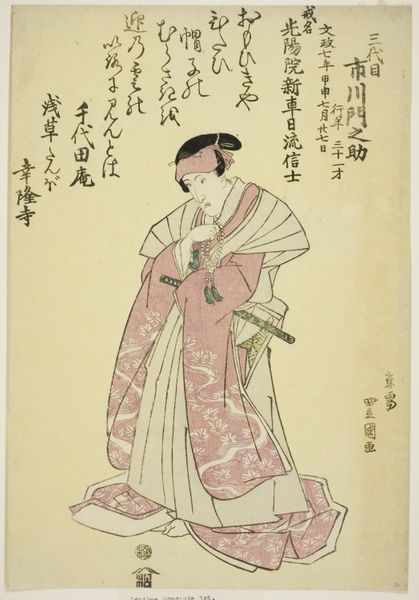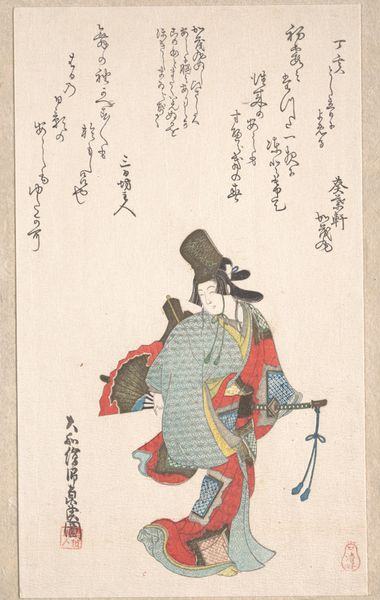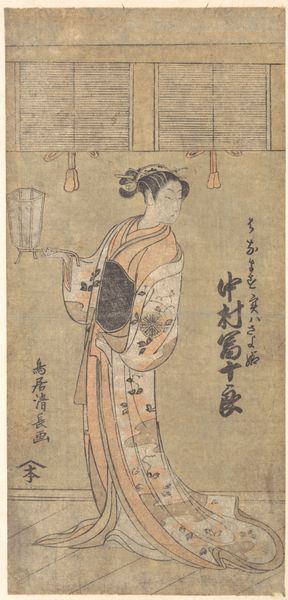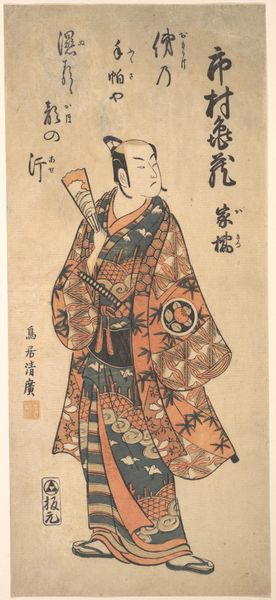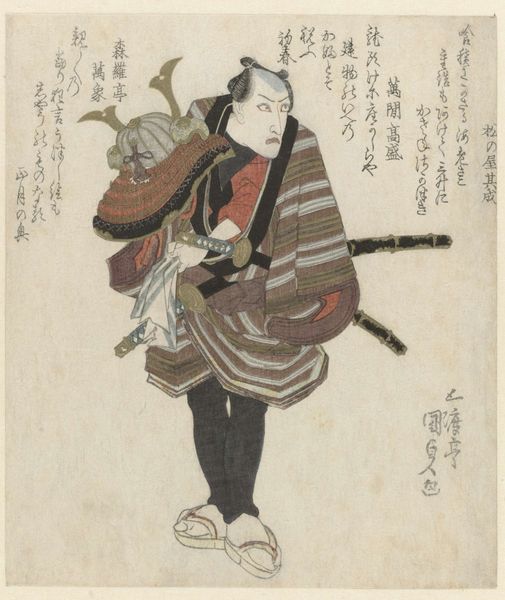
# print
#
asian-art
#
ukiyo-e
#
historical fashion
#
men
#
musical-instrument
Dimensions: 16 1/4 x 11 1/8 in. (41.3 x 28.3 cm)
Copyright: Public Domain
Curator: Utagawa Toyokuni I, working sometime around 1797 to 1800, made this print called "Keisei Ichikawa Denzo." It’s now at the Metropolitan Museum of Art. Editor: It feels incredibly intimate, almost a snapshot taken mid-performance. The pose, the almost shy expression... it pulls you right in. And the instrument, a shamisen I believe, becomes another character. Curator: This work is a ukiyo-e print, meaning "pictures of the floating world". The "floating world" being the fashionable world of the Kabuki theater, pleasure districts, and celebrity culture in Edo period Japan. It places performance and persona squarely into art. The prints are key, since the images circulated so rapidly to a wide range of social classes. Editor: I like how the man is placed in relation to the viewer—grounded yet strangely removed. And the colors, those muted greens and purples, make the overall atmosphere subdued yet vibrant, not as flashy as I thought it would be. Is that contrast intentional, do you think, a quiet resistance to the flamboyant life this guy represents? Curator: The historical context here is ripe. Keisei Ichikawa Denzo, most likely a portrait of a famous actor playing a courtesan, blurs the boundaries of gender and social status. In Japan's rigidly structured Edo society, the kabuki theater became a vital, and very provocative, space where identities were intentionally unstable and up for grabs. Editor: Oh, definitely. It almost feels like a comment on celebrity, that performance of identity. The details in the clothing, too—each line feels significant, even symbolic. Like you said, this all circulated among many viewers in a flash! It’s crazy to think how modern the concerns in this seemingly old print actually are. Curator: This piece is more than a picture, right? It’s a lens through which we can examine not only Japanese culture during the Edo period, but also the fluidity of identity itself. I'll carry those thoughts of gender fluidity forward with me today for sure. Editor: Absolutely. For me, I think I’m left wondering about what a 21st-century “floating world” and its prints looks like in our digital lives.
Comments
No comments
Be the first to comment and join the conversation on the ultimate creative platform.
